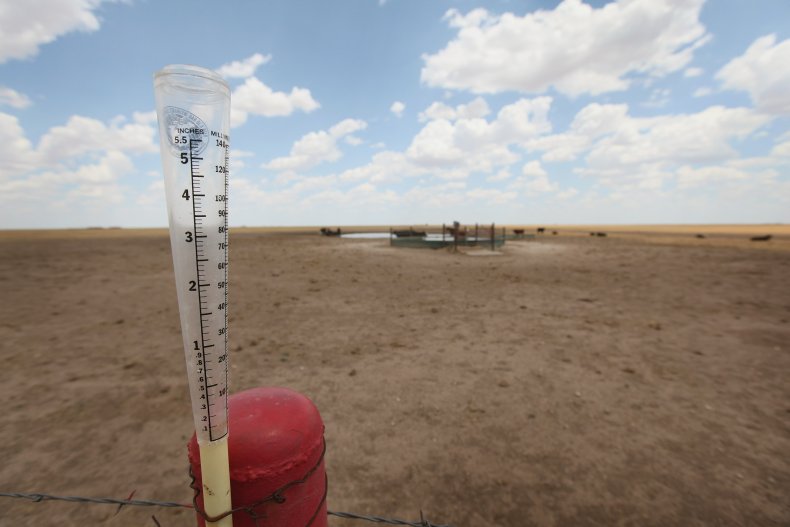Drought has parched one lake in Texas so badly that tornado debris from years ago is now exposed.
Drought has plagued the Southwest for years, drastically impacting water levels at reservoirs like Lake Mead and Lake Powell. Lake Mead has started to recover after a wet winter, but Texas is still battling severe drought, and one of the state's largest lakes is experiencing the effects.
Nearly 40 percent of Polk County in eastern Texas is battling exceptional drought, the most severe classification of drought from the U.S. Geological Survey. The drought is much worse than in September 2022, when none of the county was suffering from exceptional drought.
The dry period has depleted the water levels at Lake Livingston, a reservoir in Livingston, and now, debris is exposed. Residents living near the lake have started to pick up the debris—consisting of metal that was ripped from homes in a fatal 2020 tornado that tore through Polk County—when walking out on dry lake beds, according to a report by KRIV in Houston.
Residents are urging the Trinity River Authority (TRA), which oversees the lake, to clean up the debris before someone gets hurt.
TRA Communications Manager Vanassa Joseph told Newsweek that the TRA is continuing to monitor the situation.
"If the lake gets drier or if we get rainfall and get access by boat, we will attempt to remove the hazards," she said. "But we have to have the right conditions to get in there."

Joseph said that wood and other debris is "almost always present in reservoirs" and urged visitors to exercise caution, especially when lake levels are low.
"There's an opportunity somebody could get killed or hurt," Larry Simmons, a resident living near the lake, told KRIV. "They pull kids around on inner tubes, if they fall off on the wrong spot, [that] sheet metal out there will cut you good."
Simmons said the tornado, which was classified as an EF-3, ripped metal off homes and flung it into the lake. The metal has been submerged until recently, when a dry spell exposed lake beds.
Tornado winds peaked at 140 mph, according to a report by the National Weather Service (NWS). It killed three people, and at least 30 more were injured during the tornado, which touched down near Lake Livingston before crossing the lake and continuing through Onalaska.
Texas is the state with the most tornados each year, followed by Kansas and Florida. Texas averages 132 twisters annually, according to an online report by Texas Almanac.
Submerged items like metal, trees or rocks pose underwater hazards, especially when water levels are not high enough to ensure safe passage over the object. Man-made reservoirs are formed by inundating an area with water, and all of the structures that previously existed remain beneath the surface.
This month, some residents feared that the historic town of Sparta, Texas, would be revealed by severe drought at Lake Belton. In July, hazards were exposed at Lake Travis as the Texas reservoir battled severe drought. Exposed hazards included a concrete plant, houses, docks and a pecan grove where the trees stand as high as 100 feet.








